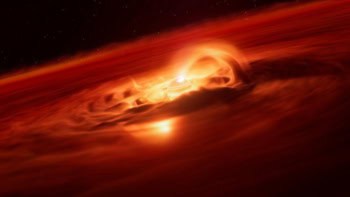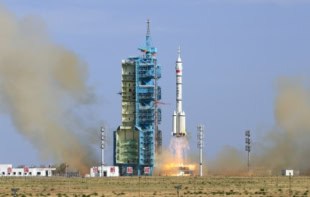Organic compounds in the dust swirling in the young solar system may have led the dust to clump into ‘planetesimals’ much earlier than astronomers thought. Akira Kouchi of Hokkaido University in Japan and colleagues simulated collisions between such dust particles and found that they stuck together surprisingly readily. According to the team, the result could help to explain why there is less matter in the asteroid belt than existing models of the solar system predict (A Kouchi et al 2002 Astrophys. J. Lett. 566 to appear).
Interstellar dust grains typically have a silicate core surrounded by an organic layer, which is encased in ice. Astronomers believe that – when the solar nebula formed – these particles aggregated into asteroids and planetesimals. Previous studies of collisions between dust grains have involved only silicate- and ice-based particles, but the ice is likely to have evaporated in the temperatures of the early solar system.
Based on previous studies of the make-up of interstellar dust, Kouchi and co-workers synthesized a range of organic compounds. To mimic collisions between millimetre-sized particles, they dropped a 1-cm copper sphere onto a copper surface coated with these organic materials. The team then used a load cell to measure the force needed to pull the sphere away from the organic layer to see how well it had stuck. The experiment was repeated for a range of impact velocities and at temperatures of 200–300 kelvin.
Kouchi and colleagues found that sphere stuck to the organic grains at collision speeds of up to five metres per second – an order of magnitude higher than the speed at which silicate- or ice-based grains coagulate. This suggests for the first time that dust grains could have gelled in the turbulent conditions in the early solar system. The organic matter was also stickiest at 250 kelvin, which corresponds to the temperature of the asteroid belt in the young solar nebula.
Astronomers have long wondered why there is a shortage of matter in the asteroid belt. Kouchi’s team believes that this could be explained if planetesimals formed earlier than expected and were then pulled towards the Sun – and out of the asteroid belt – by an effect known as gas drag. The findings also suggest that the first planetesimals formed in the asteroid belt, challenging the accepted view that they emerged almost uniformly across the solar system.



